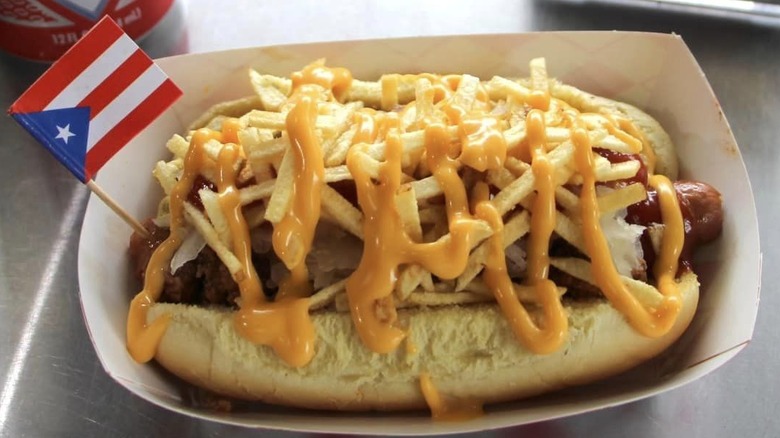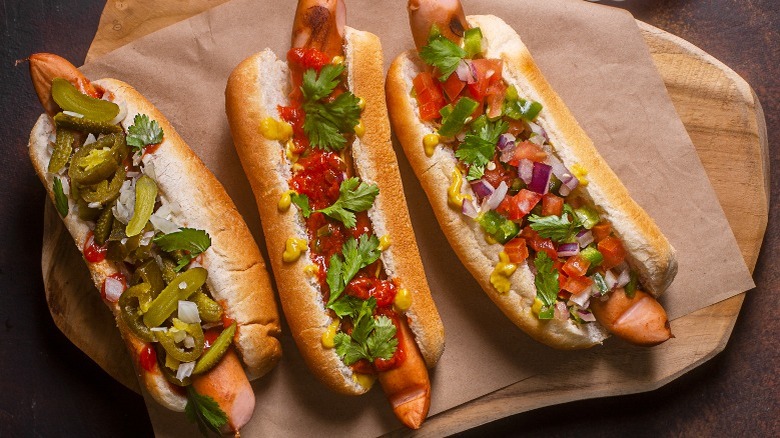Puerto Rican Hot Dogs Are All About The Toppings
Every country has its own street food, usually made with a variety of local ingredients that showcase the culinary spirit of the region. Puerto Rico is no exception, and although it's a U.S. territory, it has an amazingly rich food history. Puerto Rican cuisine, like many island cuisines, is a mix of influences. Indigenous people of the island, Taínos and Arawaks, cooked with local seasonings, fruits, and vegetables, later incorporating African, Spanish, Cuban, Mexican, and American influences into the food. Walking the streets of Puerto Rico you'll see arepas (fry bread), mofongo (fried plantains), elotes (street corn), and hot dogs. Lots of hot dogs. Hot dog stands can be found all over the island, particularly near its beaches. It's hard to know if the origin of hot dogs in Puerto Rico is American or European. Arguably the hot dog is all-American food, but do we know the difference between hot dogs and frankfurters from Germany? One thing we know is that hot dogs are a beloved street food, and when they're done the Puerto Rican way, it's all about the toppings.
Just as American hot dogs aim to please the masses with their versatility of toppings, Puerto Rican dogs can be customized in multiple ways, too. There are common elements to the American hot dog: boiled all-beef dog, bun, ketchup, mustard, and onions. However, additional toppings that reflect the vibrant, blended food culture of the island are key elements to what makes a Puerto Rican hot dog singular.
What toppings go on a Puerto Rican hot dog?
There are so many hot dog stands in Puerto Rico that you don't have to walk far to find one. You can get a plain old dog with mustard if you'd like, but try one made in the Boricua style. One great combination to try is a hot dog with pico de gallo and mozzarella cheese. Or choose a salchicha polaca (Polish sausage) instead of a beef frank. But no matter what you order, you'd be remiss if you didn't ask for a fully loaded dog.
This hot dog starts with a boiled frank, and then it's piled high with ground beef picadillo, an empanada filling cooked with potatoes, adobo, sazon seasoning, sofrito (a basic preparation of garlic, onion, peppers, and tomatoes), olives, and tomato sauce. Next, sauerkraut is added along with some onions cooked in tomato sauce, then ketchup, mustard, and the final two ingredients that make this hot dog a thing of Boricua pride: cheese sauce and potato sticks. Not French fries, potato sticks. Remember the salty, crunchy julienned-style potato snacks that come in a canister? They are the Puerto Rican hot dog topper you must not forsake. The potato sticks add the crunch, and the salt balances out the sourness of the kraut. If you can't make it to Puerto Rico, pick up some ingredients and surprise the family with a hot dog from the "rich port."

